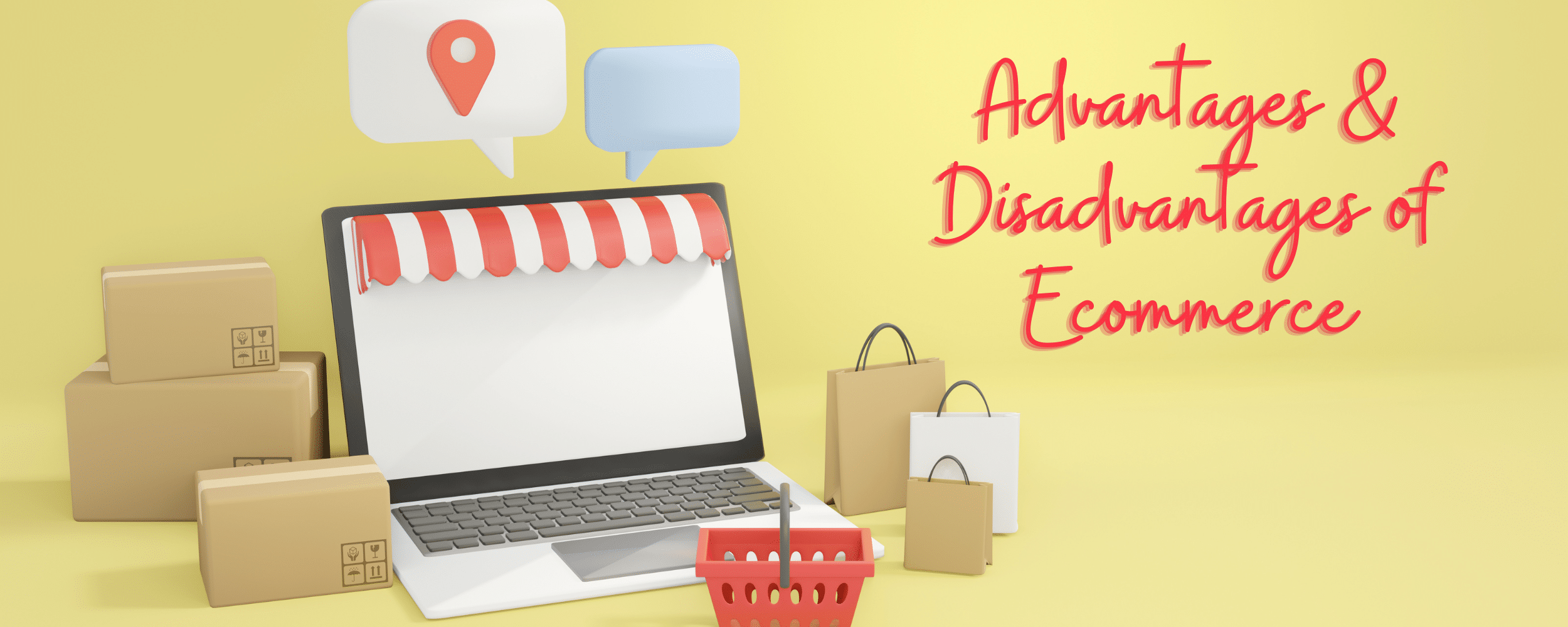Advantages and Disadvantages of Ecommerce
E-commerce has undoubtedly disrupted the traditional retail model, bringing consumers more convenience and cost savings. However, it comes a range of Advantages And Disadvantages of Ecommerce that must be considered before diving into it. The advantages and disadvantages of ecommerce are numerous.
On the other hand, not having brick-and-mortar establishments reduces overhead costs, revving physical advancement and maximizing financial rewards. Furthermore, customers can access your product 24/7.
However, on the flip side, it’s easy to get lost amidst all the vast players depending on your product. Adhering to internet regulations also becomes an issue along with data security. So you must have a solid plan for risk management procedures.
However, the benefits of selecting eCommerce as your preferred company model outweigh any possible disadvantages. So, what are the advantages and disadvantages of ecommerce? When it comes to the Advantages and Disadvantages of Ecommerce, it pays to consider the overall outcome. Let’s find out more about the advantages and disadvantages of eCommerce.
Advantages And Disadvantages of Ecommerce: What Is E-commerce?
Shopping online has become the norm for many – thanks to eCommerce! ECommerce is buying or selling goods on the internet. You can find almost anything online, from clothing and food to electronics and furniture.
It’s an excellent way for businesses of all sizes to reach a global market. It’s also an efficient way for customers to browse and purchase products from their favorite stores. Whether you’re ordering a box of teas from your favorite online store or booking a ticket to an exotic beach destination. eCommerce makes it easy and convenient.
Advantages and Disadvantages of Ecommerce: Need for eCommerce
Today’s financial world has been dramatically digitized, transforming how we shop and do business. ECommerce is becoming increasingly important as a competitive necessity, providing more significant opportunities for buyers and sellers than ever.
- With eCommerce, businesses can expand their reach to customers worldwide, running 24/7 without additional overhead or physical restrictions.
- It also provides convenience to customers who can access vast inventories of products from the comfort of their homes.
- eCommerce gives businesses more control over marketing campaigns, targeted ads, analytics, and content by reducing spending on shops and staff.
These features make eCommerce an economical and efficient platform for enterprises of all sizes, which explains its popularity today.
Advantages of eCommerce
The advantages and disadvantages of e-commerce can’t be denied. On the other hand, online buying opens many doors for consumers. The convenience of shopping from home allows customers to carry out their transactions without the need to step outside their homes. It saves time and money on transportation costs.
Additionally, online stores have no working hours; online shops stay open 24×7, allowing customers to shop whenever they like. eCommerce allows shoppers to save money by offering an extensive range of eCommerce products at low costs and many deals.
It is not difficult to understand why many people have embraced the digital age of commerce.
1. Increased Reach
One of the most significant advantages of e-commerce is its ability to reach customers worldwide. You’re limited by location with a physical store, but with an online store, you can reach customers anywhere. This means more significant sales potential and increased profits for your business.
2. Lower Overhead Costs
Another benefit of e-commerce is its low overhead costs compared to traditional stores. You don’t have to pay rent or utilities for your online store, hire employees, or buy computers or cash registers. All you need is a website and some web hosting services—which cost much less than renting out a physical space!
3. Automation
E-commerce also allows businesses to automate many processes, such as order fulfillment and payment processing. This makes it easier for businesses to run their operations with fewer resources while still providing excellent customer service. Furthermore, automation saves time and reduces human error, improving operations efficiency.
4. Better Customer Experience
Customers expect quick and efficient services when they shop online. So having an effective customer service system helps ensure they will have a good experience with your brand. In the long run, this might result in more sales and greater brand loyalty from customers.
Disadvantages of eCommerce
The advantages and disadvantages of eCommerce go hand in hand. While the ability to market goods online is often a tremendous money-saving opportunity, it has drawbacks. One significant disadvantage of eCommerce is the need for physical contact between merchants and customers.
Being unable to interact physically can make forming personal relationships challenging. It makes some customers hesitant to purchase from an online store compared to visiting a physical storefront. In addition, eCommerce depends heavily on technology and electronic transactions. There are higher chances for something to malfunction or for hackers to breach security and steal user information.
To avoid this, merchants should ensure their site meets the highest assurance requirements and uses the most effective security measures. While there are advantages to conducting business through eCommerce, it’s essential to be aware of its drawbacks before committing to it.
1. Security Risks
One of the primary disadvantages of e-commerce is security risks. Customers risk having their credit card or other personal information stolen or exploited on e-commerce websites. To mitigate this risk, you should always ensure that the websites you use are secure and encrypted. Additionally, never store any sensitive information on your computer or device.
2. Customer Service
Another downside of doing business online is having to deal with customers. E-commerce stores have limited customer service alternatives compared to brick-and-mortar stores. Customers are allowed to ask questions and receive personalized assistance.
In most cases, customers may only be able to contact a customer service representative via email or telephone. It can take time and effort to resolve any issues they may have with their order.
3. Shipping Costs & Delays
Finally, shipping costs and delays are other common disadvantages of e-commerce. If customers don’t qualify for free shipping or discounts from many online businesses, shipping fees can pile up. Orders from international vendors or delivery logistics issues like severe weather or road closures might delay delivery.
Conclusion:
The advantages and disadvantages of e-commerce are a common topic of discussion today. Drawing to a close, it is essential to consider the advantages and disadvantages of eCommerce.
E-commerce has come a long way since its inception. It has become increasingly popular among businesses and customers due to its many advantages. It allows businesses to grow their operations while offering clients quick access to their required products and services.
Understanding how e-commerce works will help you maximize its potential, whether you’re just starting out or trying to develop.








![Beyond ChatGPT: Best ChatGPT Alternatives in 2023 [Free & Paid]](https://saaslyft.com/wp-content/uploads/2023/03/Its-All-About-the-Timing-6-768x309.png)
